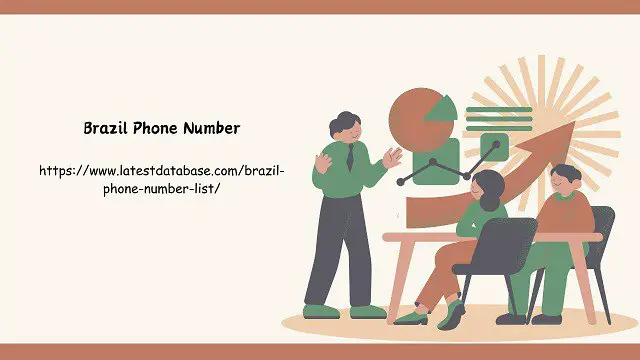Post by jferdousy427 on Feb 20, 2024 2:19:16 GMT -5
If you’re surprised that I’d send an email like this, you should probably check out the back-issue of the Shirtsleeves Marketing Communiqué entitled “The 6 Ballsy Email Marketing Techniques Smart Entrepreneurs Use To DOMINATE…While Competitors Struggle To Even Keep Their Heads Up”. In it, I explain why you should not fear a high unsubscribe rate — indeed, why it is a sign of a healthy, money-making email marketing strategy. You can grab it here: I get a 38.9% open rate on this email, and a 15.4% click rate.
But my unsubscribe rate is only 5.8%—so nearly 10% of people are Brazil Phone Number clicking the offer link, not the unsubscribe link! (Notice, however, that my unsubscribe rate is 5.8%. This will get you in trouble with your ESP, as I know from experience. I had to talk to them about this campaign to get them to okay it. It wasn’t a problem, because they saw I was actually trying to help my readers out.) What’s obvious about this campaign is how I’m prompting poor prospects to unsubscribe. I don’t want them to just ignore my emails.

But what’s not so obvious is how I am prompting good prospects to consciously identify themselves as such. I’m getting them to reflect on the value I’ve given them so far, and say to themselves, “Yes, I want to keep getting these emails.” In other words, I’m making them re-qualify for my list—thus consciously reinforcing my value in their eyes. After all, which do you think a reader will perceive as more valuable: something he gets automatically after requesting it once…or something he gets automatically after trying it out, making a conscious affirmation of its value, and deciding to keep on getting it? 2. Emailing Every Day (ish) Every day is far too often for poor prospects.
But my unsubscribe rate is only 5.8%—so nearly 10% of people are Brazil Phone Number clicking the offer link, not the unsubscribe link! (Notice, however, that my unsubscribe rate is 5.8%. This will get you in trouble with your ESP, as I know from experience. I had to talk to them about this campaign to get them to okay it. It wasn’t a problem, because they saw I was actually trying to help my readers out.) What’s obvious about this campaign is how I’m prompting poor prospects to unsubscribe. I don’t want them to just ignore my emails.

But what’s not so obvious is how I am prompting good prospects to consciously identify themselves as such. I’m getting them to reflect on the value I’ve given them so far, and say to themselves, “Yes, I want to keep getting these emails.” In other words, I’m making them re-qualify for my list—thus consciously reinforcing my value in their eyes. After all, which do you think a reader will perceive as more valuable: something he gets automatically after requesting it once…or something he gets automatically after trying it out, making a conscious affirmation of its value, and deciding to keep on getting it? 2. Emailing Every Day (ish) Every day is far too often for poor prospects.

